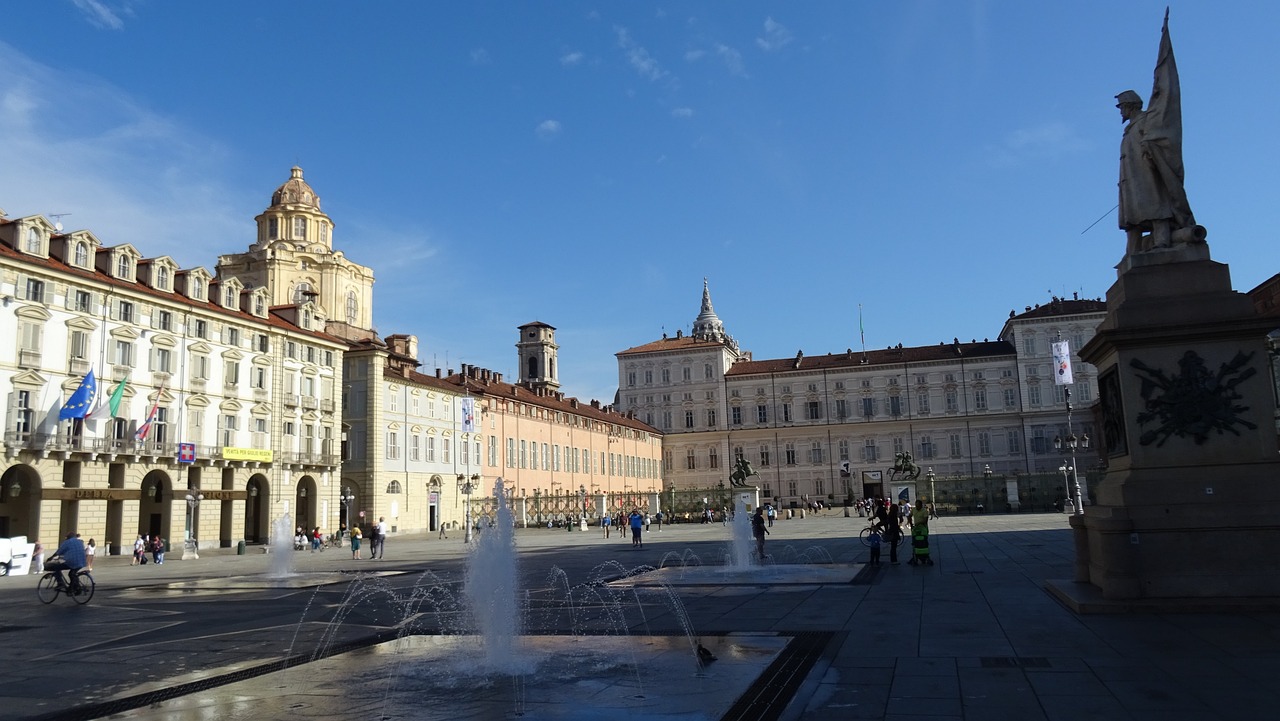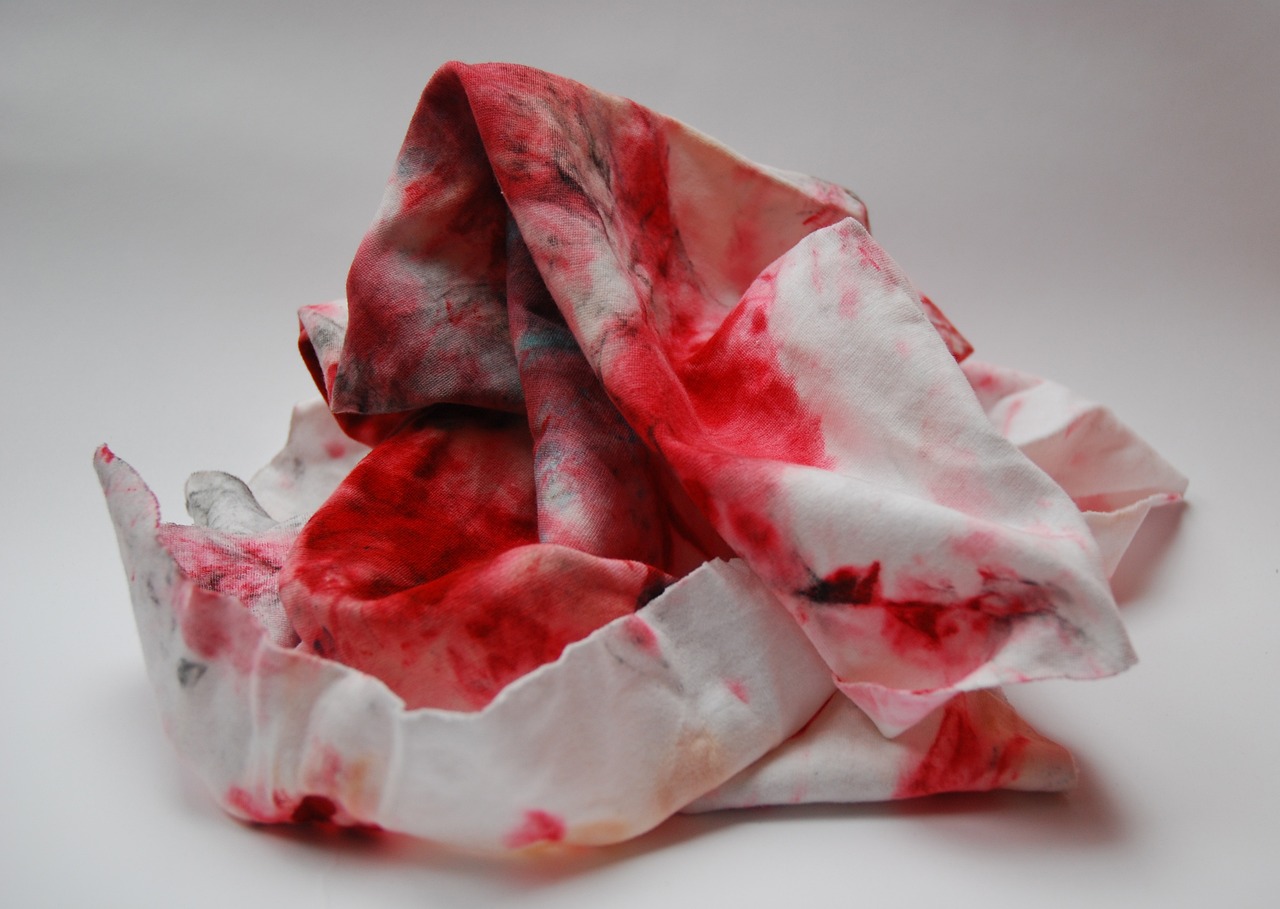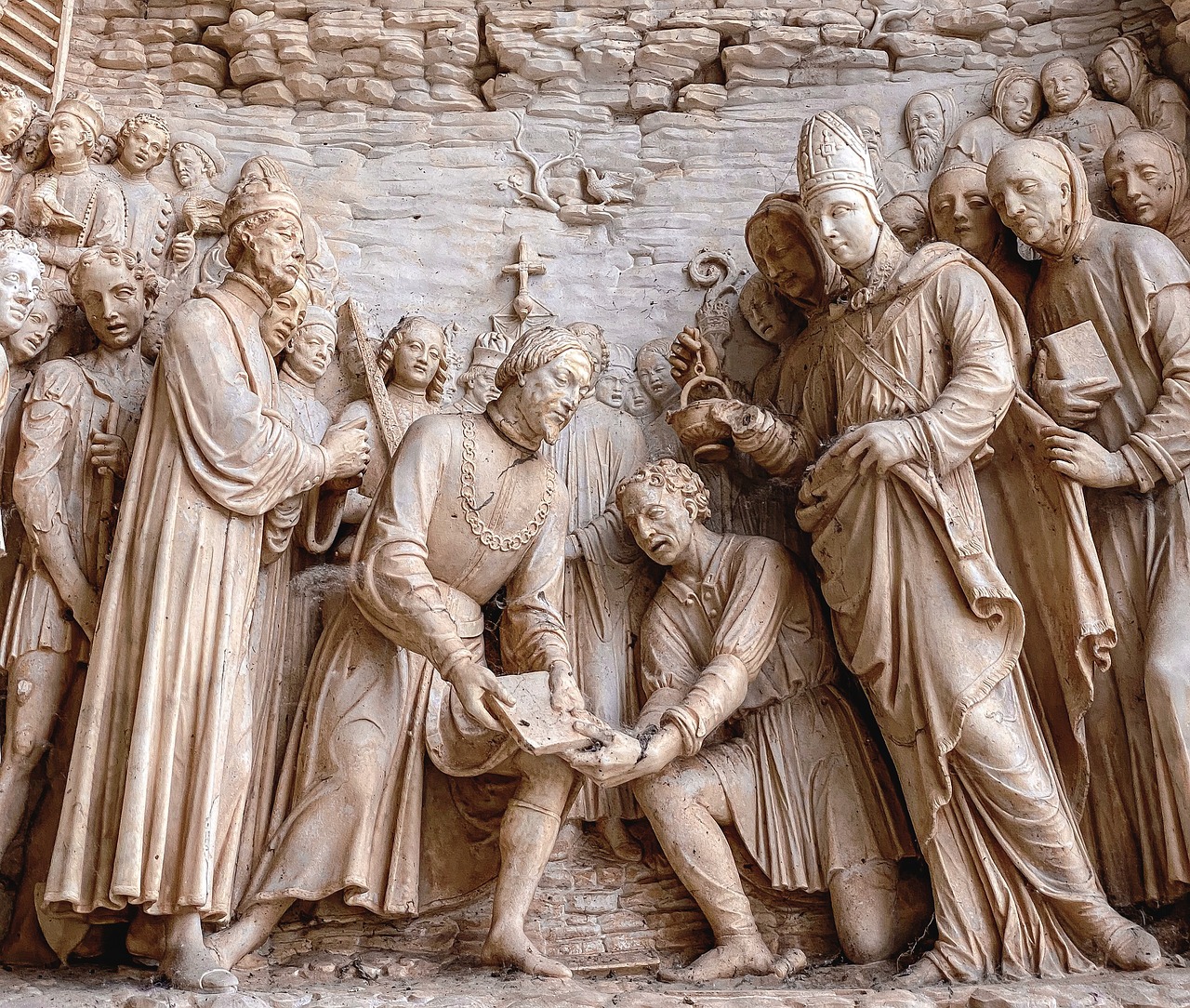The Riddle of the Shroud of Turin
Unveiling the enigmatic enigma that is the Shroud of Turin, a relic steeped in mystery and controversy, believed by some to be the very cloth that wrapped the body of Jesus Christ after the crucifixion. This ancient piece of fabric has ignited fierce debates, blending the realms of science and faith into a captivating tapestry of intrigue.

History of the Shroud
The history of the Shroud of Turin is a tapestry woven with threads of mystery and controversy, stretching back through the annals of time. The first documented appearance of the shroud dates back to the 14th century in the French town of Lirey, where it was displayed as the burial cloth of Jesus Christ. However, its history prior to this remains shrouded in obscurity, with various theories suggesting origins in the Holy Land or Constantinople.
Over the centuries, the shroud has journeyed through different lands and hands, surviving fires, wars, and thefts. It has been revered as a sacred relic by believers and scrutinized as a possible hoax by skeptics. The authenticity of the shroud has been a subject of intense debate, with proponents and detractors presenting compelling arguments to support their claims.
One of the most significant moments in the history of the shroud was the 1988 carbon dating test, which purported to place its creation between 1260 and 1390 AD, casting doubt on its connection to the time of Jesus. This revelation ignited a firestorm of controversy, with some questioning the validity of the dating methods used and others accepting the results as conclusive evidence.
Despite the scientific scrutiny and historical investigations, the shroud continues to captivate the imagination of people around the world. Its enigmatic image, believed by some to be the imprint of Jesus' crucified body, remains a powerful symbol of faith and devotion. The history of the Shroud of Turin is not just a chronicle of events but a reflection of humanity's enduring quest for meaning and transcendence.

Scientific Studies
When it comes to the Shroud of Turin, scientific studies play a crucial role in unraveling the mystery shrouding this ancient relic. Over the years, numerous investigations have been conducted to determine the origins of the enigmatic image imprinted on the linen cloth. One of the most contentious issues surrounding the shroud is the carbon dating controversy. Carbon dating tests have yielded conflicting results, with some suggesting a medieval origin while others point to an ancient date. This discrepancy has sparked heated debates among scientists, historians, and religious scholars, raising questions about the accuracy of the dating methods used.
In addition to carbon dating, forensic analysis has provided valuable insights into the shroud's history. The presence of bloodstains and markings resembling wounds has led researchers to explore the possibility of a connection to the crucifixion of Jesus Christ. By examining these details through a forensic lens, experts aim to shed light on the circumstances surrounding the shroud's creation and the events it may have witnessed.
Moreover, pollen analysis has been instrumental in tracing the geographical origins of the plants embedded in the fabric of the shroud. By identifying specific pollen grains, scientists can narrow down the possible locations where the cloth may have been exposed, offering clues to its journey through time. This botanical evidence adds another layer of complexity to the scientific studies surrounding the Shroud of Turin, painting a vivid picture of its historical trajectory.

Carbon Dating Controversy
The surrounding the Shroud of Turin has been a subject of intense debate among scientists and religious scholars. Carbon dating tests conducted on the shroud have yielded conflicting results, leading to questions about the accuracy of these findings. While some studies suggest that the shroud dates back to the time of Jesus Christ, others indicate a much later origin.
One of the key points of contention in the carbon dating controversy is the methodology used in the tests. Critics argue that the samples taken for analysis may have been contaminated over the centuries, which could have skewed the results. Proponents of the authenticity of the shroud, on the other hand, point to the reliability of carbon dating technology and defend the accuracy of the dating process.
Moreover, the is not just a scientific issue but also a theological one. For many believers, the age of the shroud holds profound significance as it is believed to be the burial cloth of Jesus Christ. The implications of dating the shroud to a later period could challenge long-held religious beliefs and raise questions about the authenticity of one of Christianity's most revered relics.
Despite the conflicting results of carbon dating tests, the mystery of the Shroud of Turin continues to captivate the imagination of people around the world. The enigmatic image imprinted on the linen cloth remains a puzzle that defies easy explanation, inviting further scrutiny and debate from both scientific and religious perspectives.

Forensic Analysis
When it comes to the Shroud of Turin, one of the most intriguing aspects that captivates both scientists and believers is the forensic analysis conducted on the cloth. This meticulous examination has unveiled a plethora of details that seem to align with the biblical narrative of Jesus Christ's crucifixion. Among these findings are the distinct bloodstains that adorn the shroud, believed by many to be indicative of the wounds inflicted during the crucifixion.
Forensic experts have scrutinized the patterns of these bloodstains, noting their consistency with the injuries described in the Gospels. The placement of these marks on the cloth corresponds with the locations of the wounds typically associated with the crucifixion, such as those on the wrists, feet, and side. This alignment has sparked intense debates among scholars, with some viewing it as compelling evidence of the shroud's authenticity.
Moreover, the presence of scourge marks on the shroud further deepens the mystery surrounding its origins. These imprints, resembling those left by a Roman flagrum, have been meticulously studied to ascertain their consistency with historical accounts of the punishment inflicted upon Jesus prior to his crucifixion. The intricate details captured on the shroud have led to fervent discussions regarding the plausibility of such precise replication through artistic means.
Additionally, the forensic analysis of the Shroud of Turin extends beyond the examination of bloodstains and wounds. Scientists have also delved into the composition of the cloth itself, seeking clues that could shed light on its age and provenance. Through advanced techniques such as spectroscopy and microscopy, researchers have attempted to unravel the enigmatic origins of the image imprinted on the fabric, offering insights into the possible techniques employed in its creation.

Religious Significance
Delving into the religious interpretations of the Shroud of Turin reveals a tapestry of beliefs and controversies that have captured the imagination of believers and skeptics alike. Within the Christian faith, the shroud holds a sacred place as a possible relic connected to the crucifixion and resurrection of Jesus Christ. Its veneration by devout followers underscores the profound significance attributed to this mysterious cloth, believed by some to bear the image of the Savior.
Throughout history, the shroud has been the subject of intense theological debates, with scholars and clergy offering diverse interpretations of its meaning and authenticity. Some view it as a powerful symbol of Christ's sacrifice and victory over death, while others question its provenance and question the validity of its miraculous image. The shroud's enigmatic nature continues to fuel discussions within religious circles, prompting reflections on the nature of faith and the mysteries of divine intervention.
For believers, the shroud represents a tangible link to the life and teachings of Jesus, a relic that transcends time and space to offer a glimpse into the events of the Passion. The intricate details of the image, including the wounds and bloodstains reminiscent of the crucifixion, serve as poignant reminders of the suffering endured by Christ for the salvation of humanity. The shroud's presence evokes a sense of reverence and awe, inviting contemplation on the profound mysteries of redemption and forgiveness.

Symbolism and Interpretations
When it comes to the Shroud of Turin, the realm of symbolism and interpretations is as vast and diverse as the historical tapestry itself. This enigmatic cloth, believed by many to bear the image of Jesus Christ, holds profound significance for believers and scholars alike. The symbolism embedded in the shroud transcends mere physical appearance, delving into the spiritual and metaphysical realms.
Within the Christian faith, the shroud is often seen as a powerful symbol of Christ's sacrifice and resurrection. The image imprinted on the cloth is viewed as a poignant reminder of the suffering endured by Jesus during his crucifixion, serving as a tangible connection to the central tenets of Christianity. The interpretations of the shroud's image vary widely, with some seeing it as a miraculous imprint left by the divine and others attributing it to natural or human origins.
Various religious traditions have developed unique interpretations of the shroud, each imbuing it with layers of meaning and significance. For some, the shroud represents the ultimate act of love and redemption, symbolizing the transformative power of faith and forgiveness. Others view it as a mysterious artifact that challenges conventional understandings of history and spirituality, sparking contemplation and debate among believers and skeptics alike.
Moreover, the symbolism of the shroud extends beyond its religious connotations, resonating with themes of mystery, faith, and authenticity that captivate the human imagination. The shroud's enigmatic nature invites contemplation and reflection, prompting individuals to ponder the meaning of belief and the boundaries between science and spirituality.

Alternative Theories
When it comes to the enigmatic Shroud of Turin, a myriad of alternative theories have emerged over the years, attempting to unravel the mystery shrouding its origins. While some steadfastly believe in its divine nature, skeptics have put forth compelling arguments challenging its authenticity. One of the most prominent alternative theories suggests that the shroud is not a sacred relic but rather a cleverly crafted piece of medieval artwork.
According to this hypothesis, the Shroud of Turin was meticulously created by skilled artisans of the Middle Ages as a form of artistic expression. The intricate details and lifelike image imprinted on the fabric are believed to be the result of sophisticated techniques employed by talented craftsmen seeking to deceive viewers with a semblance of realism.
Furthermore, proponents of the artistic reproduction hypothesis argue that the motivations behind such a forgery could range from financial gain to religious fervor. In a time when religious relics held immense value and power, the creation of a relic as revered as the shroud could have been a lucrative endeavor for those seeking to exploit the faith of the masses.
Moreover, the theory posits that the shroud's depiction of a crucified man bears resemblance to artistic conventions of the era, suggesting that it may have been crafted to align with popular depictions of Jesus Christ's crucifixion. By mimicking the visual language of religious art prevalent during the medieval period, the creators of the shroud could have aimed to evoke a sense of awe and reverence among believers.

Artistic Reproduction Hypothesis
The Artistic Reproduction Hypothesis posits that the Shroud of Turin was not an authentic relic but rather a meticulously crafted piece of artwork from the medieval period. According to this theory, skilled artists from the Middle Ages could have created the image using various artistic techniques available at the time.
One argument supporting this hypothesis is the presence of pigments on the shroud that are consistent with those used in medieval paintings. Critics of the shroud's authenticity point to the intricate details of the image, suggesting that it would have been challenging to create such a precise depiction without the use of artistic tools.
Moreover, proponents of the Artistic Reproduction Hypothesis highlight the lack of historical documentation linking the shroud to Jesus Christ before the 14th century. They argue that the sudden appearance of the shroud in medieval Europe aligns more closely with the era's fascination with relics and religious artifacts.
While this theory challenges the traditional belief in the shroud's divine origins, it offers a plausible explanation for the intricate nature of the image and the historical context in which it emerged. The debate between those who view the shroud as a sacred relic and those who see it as a medieval masterpiece continues to fuel scholarly discussions and intrigue enthusiasts around the world.
Frequently Asked Questions
- Is the Shroud of Turin authentic?
The authenticity of the Shroud of Turin is a subject of much debate and controversy. While some believe it to be the actual burial cloth of Jesus Christ, others question its origins and suggest alternative explanations.
- What is the significance of the carbon dating controversy?
The carbon dating controversy surrounding the Shroud of Turin stems from conflicting results of tests conducted to determine its age. This debate raises questions about the accuracy of scientific methods used to analyze historical artifacts.
- How do religious interpretations differ regarding the shroud?
Various Christian denominations and religious scholars interpret the Shroud of Turin differently. Some view it as a sacred relic embodying the suffering of Christ, while others approach it with skepticism and focus on its historical context.
- What are some alternative theories proposed about the shroud's origins?
Alternative theories regarding the Shroud of Turin include suggestions of artistic forgery, medieval craftsmanship, and even supernatural explanations. These theories offer diverse perspectives on the mysterious origins of the shroud.



















